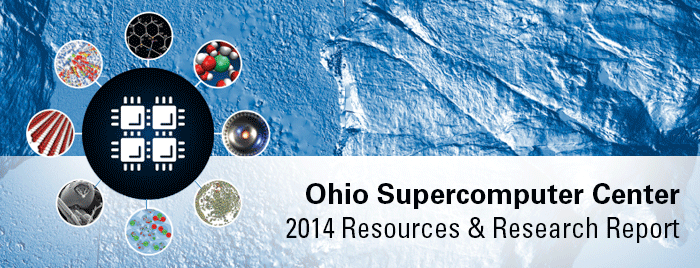Above: A cross-section of an ant’s neck joint helped researchers to study the strength of the small insect. The head exoskeleton is shown in blue, neck membrane in purple, esophagus in teal, and thoracic segments in orange.
A recent study into the biomechanics of the necks of ants – which can amazingly lift objects up to 1,000 times heavier than its body – might unlock one of nature’s little mysteries and, quite possibly, open the door to advancements in robotic engineering.
Engineers at The Ohio State University combined computational modeling at the Ohio Supercomputer Center with laboratory testing to determine the relationship between the mechanical function, structural design and material properties of the Allegheny mound ant (Formica exsectoides). The study focused on the ant’s neck – the soft tissue component that bridges the stiff exoskeleton of the head and thorax and transfers the full weight of the ant’s load carrying capacity.
“Loads are lifted with the mouthparts, transferred through the neck joint to the thorax, and distributed over six legs and tarsi that anchor to the supporting surface,” explained Carlos Castro, Ph.D., Ohio State assistant professor of Mechanical and Aerospace Engineering.
To better understand the strengths and upper limits of the joint, the researchers reverse-engineered the biomechanical design by developing 3-D models of the ant’s internal and external anatomy. The models were created by importing X-ray cross-section images (microCT) of ant specimens into a modeling program (Simpleware) to segment the model into components, convert them into a mesh frame model of more than 6.5 million elements, and assign material properties.
The model then was loaded into a finite element analysis program (Abaqus), an application that creates accurate simulations of complex geometries and forces. The simulations were run at OSC in conjunction with lab experiments that used a centrifuge to measure deformation of the neck joint under a range of calculated loads.
The experiments revealed that the neck joints could withstand loads of about 5,000 times the ant’s body weight and that the neck-joint structure produced the highest strength when the head was aligned with the loading direction. The simulations confirmed the directional strength and indicated that the neck-to-head transition is the critical point for joint failure.
Former Ohio State student Vienny N. Nguyen, now a robotics engineer at NASA’s Johnson Space Center, noted in her 2012 master’s thesis on this research, “As we look to the future of human-assistive devices and ultra-light robotics, the development of 3-dimensional models for visual analysis and loading and kinematic simulation will also serve as tools for evaluating and comparing the functional morphology of multiple species and types of joints.”
Project Lead: Carlos Castro, Ph.D., The Ohio State University
Research Title: The exoskeletal structure and tensile loading behavior of an ant neck joint
Funding Source: National Science Foundation, The Ohio State University’s Institute for Materials Research
Website: https://mae.osu.edu/labs/nbl/research

